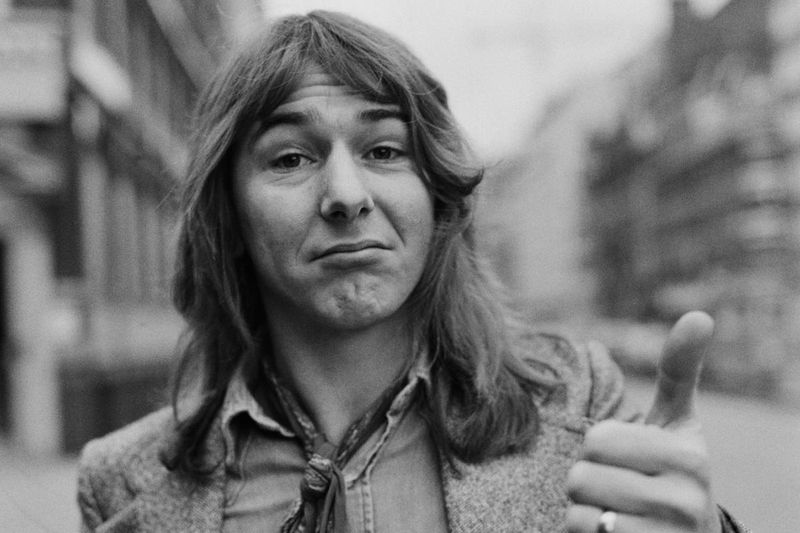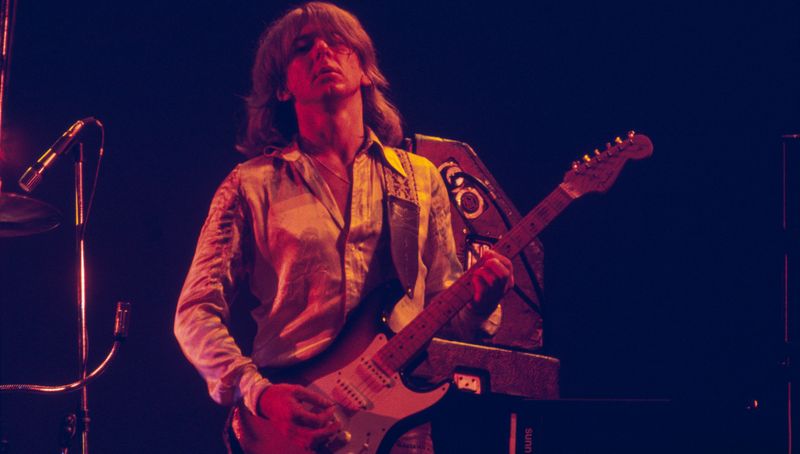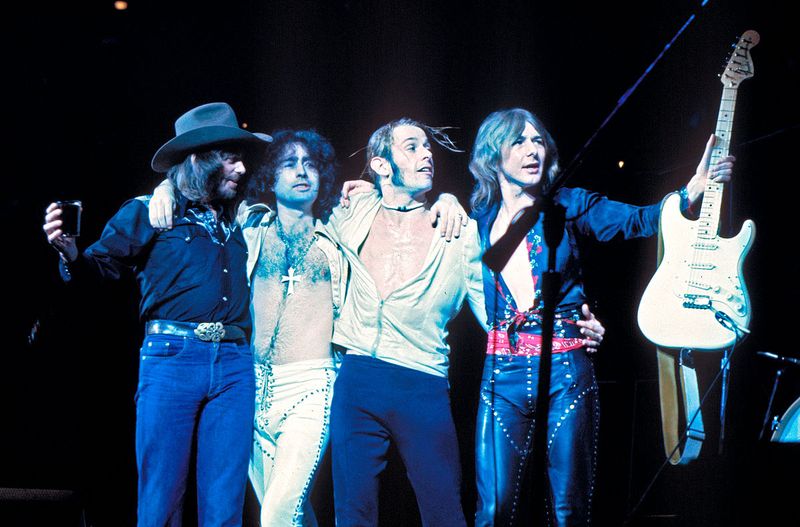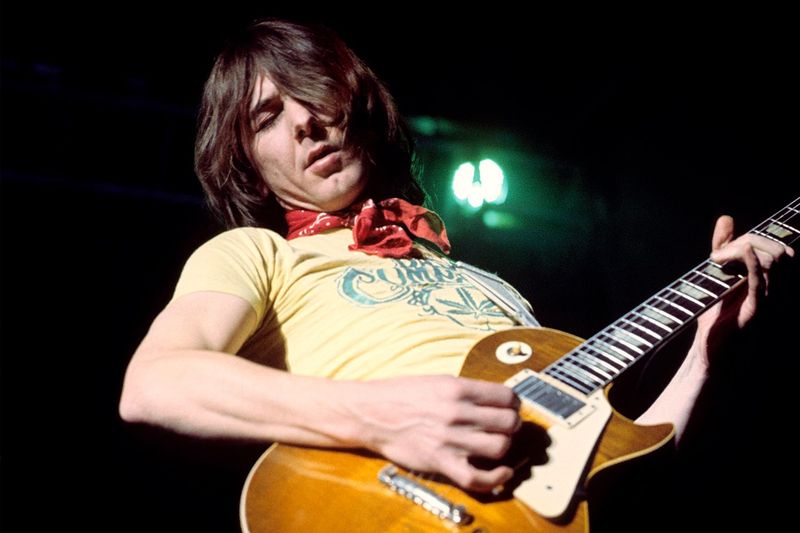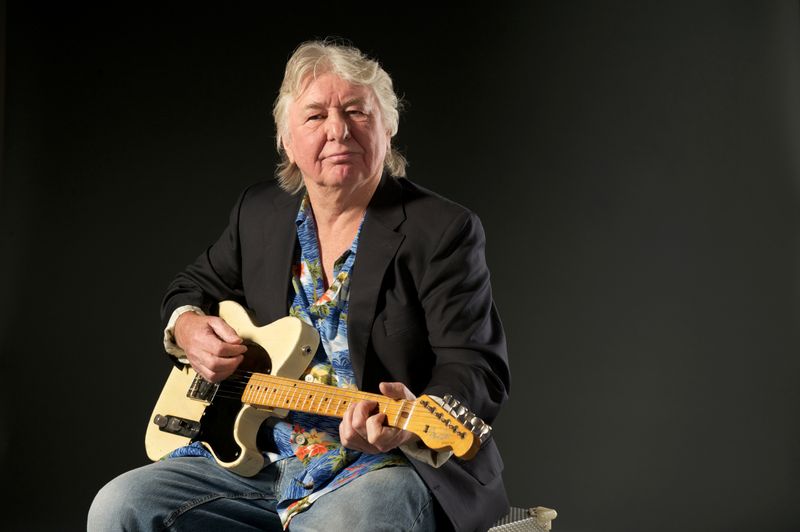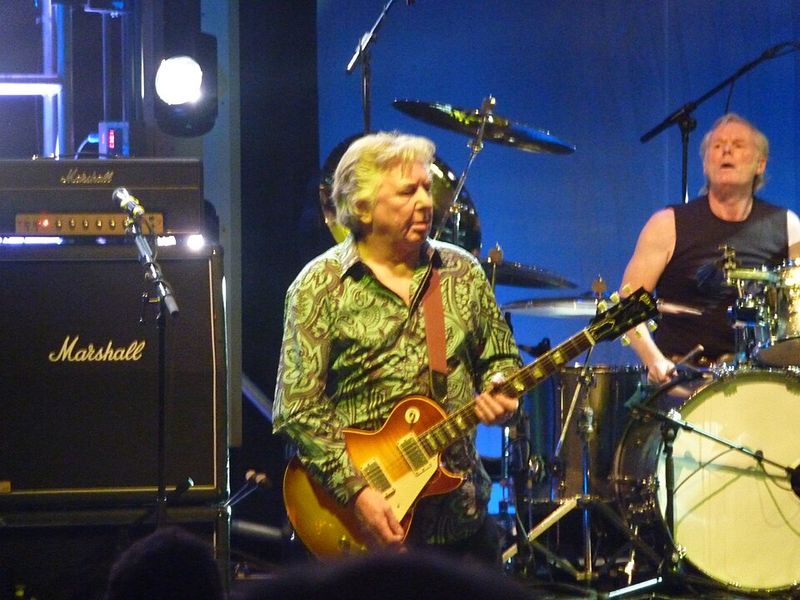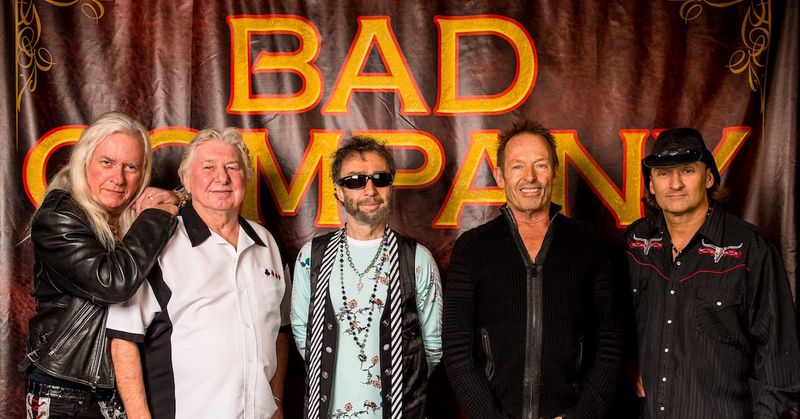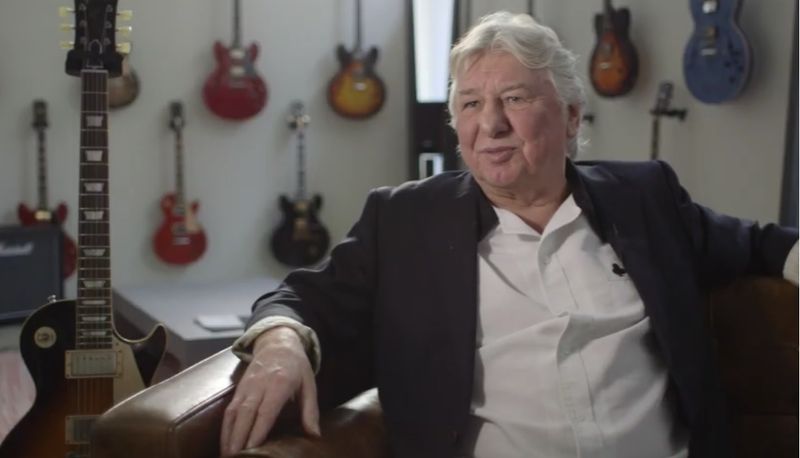The world of rock music lost a true pioneer when Mick Ralphs passed away at age 81. As the founding guitarist of both Mott the Hoople and Bad Company, Ralphs crafted some of rock’s most unforgettable riffs and helped define the sound of an era. His bluesy style and knack for writing catchy hooks left a lasting impact that continues to influence musicians today.
1. The Birth of Mott the Hoople (1969)
Fresh-faced and ambitious, Mick Ralphs helped form Mott the Hoople in 1969, bringing his distinctive guitar style to the emerging British rock scene. The band blended hard rock with glam elements, creating a sound that was both powerful and theatrical. Their early albums may not have topped charts, but they built a devoted following through electrifying live performances. Ralphs’ guitar work on tracks like “Rock and Roll Queen” showcased his raw talent and blues influences. These formative years established Ralphs as a guitarist with both technical skill and artistic vision, setting the stage for greater success to come.
2. Crafting “All the Young Dudes” Era (1972)
Though David Bowie penned their breakthrough hit, Ralphs’ guitar work gave “All the Young Dudes” its distinctive swagger. His perfectly executed riffs complemented Bowie’s glam rock anthem, helping transform Mott the Hoople from cult favorites to mainstream stars. During this golden period, Ralphs’ playing evolved, incorporating more melodic elements while maintaining his bluesy foundation. His contributions to the album of the same name showcased his growing confidence as both guitarist and songwriter. This era marked a turning point where Ralphs’ playing gained wider recognition, establishing him as one of rock’s most tasteful guitarists.
3. Songwriting Breakthrough with “Ready for Love” (1971)
Magic struck when Ralphs penned “Ready for Love” for Mott the Hoople’s 1971 album “Brain Capers.” The bluesy rock track revealed his emerging songwriting prowess with its infectious hook and emotional depth. While initially overlooked, the song found its true audience when Ralphs later reworked it with Bad Company. His original vision featured raw, emotional guitar work that perfectly complemented the lovelorn lyrics. Fellow musicians quickly recognized the song’s brilliance. This early composition demonstrated Ralphs’ unique ability to create songs that were both radio-friendly and musically substantial – a talent that would define his career.
4. Forming Supergroup Bad Company (1973)
When musical chemistry meets perfect timing, magic happens. After leaving Mott the Hoople, Ralphs joined forces with Paul Rodgers (vocals), Simon Kirke (drums), and Boz Burrell (bass) to create Bad Company – a supergroup that would dominate rock radio for years. The band signed to Led Zeppelin’s Swan Song label, giving them instant credibility in the rock world. Ralphs’ guitar style – less flashy than contemporaries but impeccably tasteful – provided the perfect foundation for Rodgers’ soulful vocals. This new chapter showcased Ralphs in a more straightforward blues-rock context where his economic playing style truly shined.
5. Crafting the Iconic “Can’t Get Enough” Riff (1974)
Some guitar riffs become instant classics the moment they’re heard. Ralphs’ opening notes on “Can’t Get Enough” represent one of rock’s most recognizable moments – a perfect marriage of blues feeling and rock power that grabs listeners from the first note. The song topped charts worldwide and became Bad Company’s signature hit. What makes the riff special isn’t technical complexity but its irresistible groove – proof that Ralphs understood the power of musical restraint. Guitarists still study this riff as a masterclass in rock songwriting. Its deceptive simplicity masks brilliant musical intuition that made Ralphs one of rock’s most influential players.
6. Bad Company’s Multi-Platinum Debut Album (1974)
Few debut albums make the impact that Bad Company’s self-titled first release achieved in 1974. Reaching #1 on Billboard charts and eventually going 5× platinum, it established the band as genuine rock stars overnight. Ralphs’ guitar work provided the album’s backbone, from the bluesy swagger of “Rock Steady” to the haunting tones of “Seagull.” His playing showcased remarkable versatility while maintaining a distinctive voice throughout. The album’s incredible success validated Ralphs’ decision to leave Mott the Hoople. His guitar tone on this record – warm, slightly overdriven, and instantly recognizable – would influence generations of rock guitarists.
7. Writing the Sultry Classic “Feel Like Makin’ Love” (1975)
Lightning struck twice when Ralphs crafted another enduring rock anthem. “Feel Like Makin’ Love” showcased his brilliant understanding of musical dynamics – starting with delicate acoustic passages before exploding into one of rock’s most memorable choruses. The song reached #10 on Billboard charts and became a staple on FM radio. Ralphs’ composition brilliantly balanced commercial appeal with musical integrity, featuring one of his most expressive guitar solos. Beyond the song’s commercial success, it demonstrated Ralphs’ growth as a songwriter. His ability to move seamlessly between gentle verses and powerful choruses created a template that countless rock ballads would follow for decades.
8. The Success of “Straight Shooter” Album (1975)
Following up a massive debut is notoriously difficult, but Bad Company’s sophomore album “Straight Shooter” proved Ralphs and company were no one-album wonders. Released in 1975, the album went platinum and cemented the band’s place in rock royalty. Ralphs’ contributions included the haunting “Shooting Star” – a cautionary tale about the dangers of rock stardom that became one of the band’s most beloved songs. His evocative guitar work perfectly captured the song’s emotional journey from hope to tragedy. Throughout the album, his playing showed remarkable maturity, emphasizing mood and feeling over technical showmanship.
9. Developing His Distinctive Blues-Rock Guitar Style
While many guitarists of his era embraced flashy solos, Ralphs took a different approach. His playing emphasized feel, tone, and serving the song rather than showcasing technical prowess – a philosophy that made his work instantly recognizable. His guitar sound combined vintage Gibson Les Pauls with Marshall amplifiers to create a warm, midrange-focused tone that cut through any mix. Fellow guitarists admired his economy – every note had purpose, with no wasted movement or unnecessary flourishes. This distinctive approach influenced countless players. Modern guitar heroes like Joe Bonamassa have cited Ralphs as a primary influence, particularly his ability to create memorable musical statements with minimal notes.
10. Touring Dominance During Rock’s Golden Era
Bad Company became one of rock’s most reliable touring acts during the mid-1970s, selling out arenas worldwide. Ralphs’ consistent performances night after night helped build their reputation as a must-see live band. Unlike studio perfectionists, Ralphs embraced the raw energy of live shows. His guitar work often took on new dimensions in concert, with extended solos and spontaneous musical conversations with bandmates that thrilled audiences. Concert recordings from this era reveal his masterful command of dynamics and tone. Even when playing the same songs night after night, he found ways to keep performances fresh while maintaining the essential character that fans loved.
11. Creating the Underrated Gem “Burnin’ Sky” (1977)
Among Ralphs’ many contributions to rock history, the title track from Bad Company’s 1977 album “Burnin’ Sky” stands as an underappreciated masterpiece. The song’s distinctive opening riff showcases his gift for creating memorable hooks that instantly grab listeners. Though less commercially successful than earlier works, the album revealed Ralphs’ continuing evolution as a guitarist. His playing incorporated more textural elements while maintaining the bluesy foundation fans loved. Music critics have since reassessed this period, with many considering it some of Ralphs’ most creative work. The album demonstrated his willingness to push beyond formula even as the band faced commercial pressures to repeat past successes.
12. Influencing Generations of Guitar Players
Countless guitarists have cited Ralphs as a primary influence on their playing style and approach. His focus on serving the song rather than showcasing technical ability resonated with players who valued musical communication over flash. Guitar legends like Slash from Guns N’ Roses have specifically mentioned Ralphs’ riffs as foundational to their own development. Even in genres far removed from classic rock, his emphasis on groove and feel continues to influence modern players. Guitar manufacturers have created signature models inspired by his distinctive tone. His legacy lives on through the countless bedroom guitarists who still learn his classic riffs as part of their musical education.
13. Reuniting with Mott the Hoople (2009, 2013)
After decades apart, Ralphs rejoined his original bandmates for highly anticipated Mott the Hoople reunion concerts in 2009. The shows at London’s Hammersmith Apollo sold out instantly, demonstrating the band’s enduring appeal across generations. Fans who never thought they’d see the original lineup perform classics like “All the Young Dudes” witnessed musical history. Ralphs’ guitar work remained impressively true to the original recordings while bringing decades of additional experience to the performances. Further reunion shows followed in 2013, including a successful UK tour. These concerts served as powerful reminders of Ralphs’ importance to the band’s original sound and success.
14. Recognition Through Bad Company’s Rock Hall Nomination
The ultimate validation of Ralphs’ musical contributions came when Bad Company received a nomination for the Rock and Roll Hall of Fame in 2023. Though not inducted in that round, the nomination acknowledged the band’s massive influence on rock music. Music historians specifically cited Ralphs’ guitar work and songwriting as key factors in the band’s consideration. His riffs on songs like “Can’t Get Enough” and “Feel Like Makin’ Love” had become part of rock’s essential vocabulary. The nomination sparked renewed interest in the band’s catalog, introducing Ralphs’ pioneering guitar work to younger audiences. His musical legacy continued growing even decades after the band’s commercial peak.
15. His Final Years and Lasting Musical Legacy
Ralphs faced significant health challenges in his later years, suffering a stroke in 2016 that sidelined him from performing. Despite these difficulties, his spirit remained connected to the music that defined his life. Fellow musicians regularly visited and celebrated his contributions, ensuring his pioneering work wasn’t forgotten. His guitar parts continued featuring in films, commercials, and video games, introducing his playing to new generations. When he passed in 2025 at age 81, tributes poured in from across the music world. The outpouring demonstrated how this humble guitarist from Herefordshire had changed rock music forever through memorable riffs, soulful playing, and songs that became part of the soundtrack of millions of lives.

